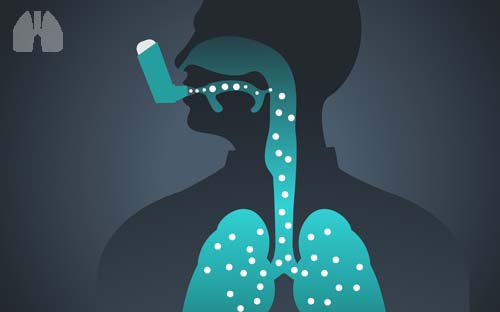
Md. Khadem Ali, Richard Y. Kim, Alexandra C. Brown, Jemma R. Mayall, Rafia Karim,James W. Pinkerton, Gang Liu, Kristy L. Martin, Malcolm R. Starkey, Amber L. Pillar, Chantal Donovan, Prabuddha S. Pathinayake, Olivia R. Carroll, Debbie Trinder, Hock L. Tay, Yusef E. Badi, Nazanin Z. Kermani, Yi-Ke Guo, Ritambhara Aryal, Sharon Mumby, Stelios Pavlidis, Ian M. Adcock, Jessica Weaver, Dikaia Xenaki, Brian G. Oliver, Elizabeth G. Holliday, Paul S. Foster, Peter A. Wark, Daniel M. Johnstone, Elizabeth A. Milward, Philip M. Hansbro, Jay C. Horvat
European Respiratory Journal 2020 55: 1901340; DOI: 10.1183/13993003.01340-2019
Abstract
Accumulating evidence highlights links between iron regulation and respiratory disease. Here, we assessed the relationship between iron levels and regulatory responses in clinical and experimental asthma.
We show that cell-free iron levels are reduced in the bronchoalveolar lavage (BAL) supernatant of severe or mild–moderate asthma patients and correlate with lower forced expiratory volume in 1 s (FEV1). Conversely, iron-loaded cell numbers were increased in BAL in these patients and with lower FEV1/forced vital capacity (FVC) ratio. The airway tissue expression of the iron sequestration molecules divalent metal transporter 1 (DMT1) and transferrin receptor 1 (TFR1) are increased in asthma, with TFR1 expression correlating with reduced lung function and increased Type-2 (T2) inflammatory responses in the airways. Furthermore, pulmonary iron levels are increased in a house dust mite (HDM)-induced model of experimental asthma in association with augmented Tfr1 expression in airway tissue, similar to human disease. We show that macrophages are the predominant source of increased Tfr1 and Tfr1+ macrophages have increased Il13 expression. We also show that increased iron levels induce increased pro-inflammatory cytokine and/or extracellular matrix (ECM) responses in human airway smooth muscle (ASM) cells and fibroblasts ex vivo and induce key features of asthma in vivo, including airway hyper-responsiveness (AHR) and fibrosis, and T2 inflammatory responses.
Together these complementary clinical and experimental data highlight the importance of altered pulmonary iron levels and regulation in asthma, and the need for a greater focus on the role and potential therapeutic targeting of iron in the pathogenesis and severity of disease.
The relationship between iron and the pathogenesis of asthma remains unclear. Here it is shown for the first time that altered iron responses are a key feature of clinical and experimental asthma and may play important roles in disease. http://bit.ly/36JKajt
Footnotes
-
This article has supplementary material available from erj.ersjournals.com
-
Conflict of interest: M.K. Ali has nothing to disclose.
-
Conflict of interest: R.Y. Kim has nothing to disclose.
-
Conflict of interest: A.C. Brown has nothing to disclose.
-
Conflict of interest: J.R. Mayall has nothing to disclose.
-
Conflict of interest: R. Karim has nothing to disclose.
-
Conflict of interest: J.W. Pinkerton has nothing to disclose.
-
Conflict of interest: G. Liu has nothing to disclose.
-
Conflict of interest: K.L. Martin has nothing to disclose.
-
Conflict of interest: M.R. Starkey has nothing to disclose.
-
Conflict of interest: A.L. Pillar has nothing to disclose.
-
Conflict of interest: C. Donovan has nothing to disclose.
-
Conflict of interest: P.S. Pathinayake has nothing to disclose.
-
Conflict of interest: O.R. Carroll has nothing to disclose.
-
Conflict of interest: D. Trinder has nothing to disclose.
-
Conflict of interest: H.L. Tay has nothing to disclose.
-
Conflict of interest: Y.E. Badi has nothing to disclose.
-
Conflict of interest: N.Z. Kermani has nothing to disclose.
-
Conflict of interest: Y-K. Guo has nothing to disclose.
-
Conflict of interest: R. Aryal has nothing to disclose.
-
Conflict of interest: S. Mumby has nothing to disclose.
-
Conflict of interest: S. Pavlidis has nothing to disclose.
-
Conflict of interest: I.M. Adcock reports grants from EU-IMI, during the conduct of the study.
-
Conflict of interest: J. Weaver has nothing to disclose.
-
Conflict of interest: D. Xenaki has nothing to disclose.
-
Conflict of interest: B.G. Oliver has nothing to disclose.
-
Conflict of interest: E.G. Holliday has nothing to disclose.
-
Conflict of interest: P.S. Foster has nothing to disclose.
-
Conflict of interest: P.A. Wark has nothing to disclose.
-
Conflict of interest: D.M. Johnstone has nothing to disclose.
-
Conflict of interest: E.A. Milward has nothing to disclose.
-
Conflict of interest: P.M. Hansbro has nothing to disclose.
-
Conflict of interest: J.C. Horvat has nothing to disclose.
-
Support statement: J.C. Horvat is supported by grants and fellowships from Cystic Fibrosis Australia and the Australian Cystic Fibrosis Research Trust and the University of Newcastle, Australia. P.M. Hansbro and D. Trinder are funded by fellowships from the NHMRC (1079187 and 1020437). P.M. Hansbro is also funded by an investigator grant from the NHMRC of Australia (1175134). Funding information for this article has been deposited with the Crossref Funder Registry.
- Received July 6, 2019.
- Accepted January 28, 2020.
- Copyright ©ERS 2020














